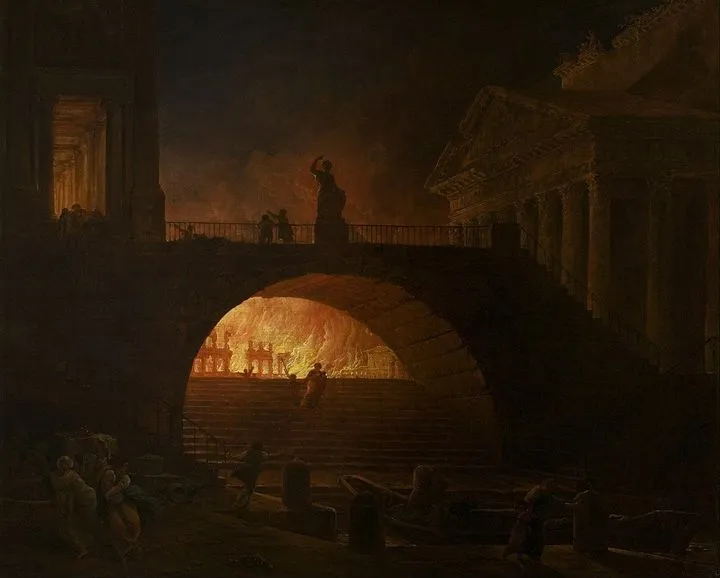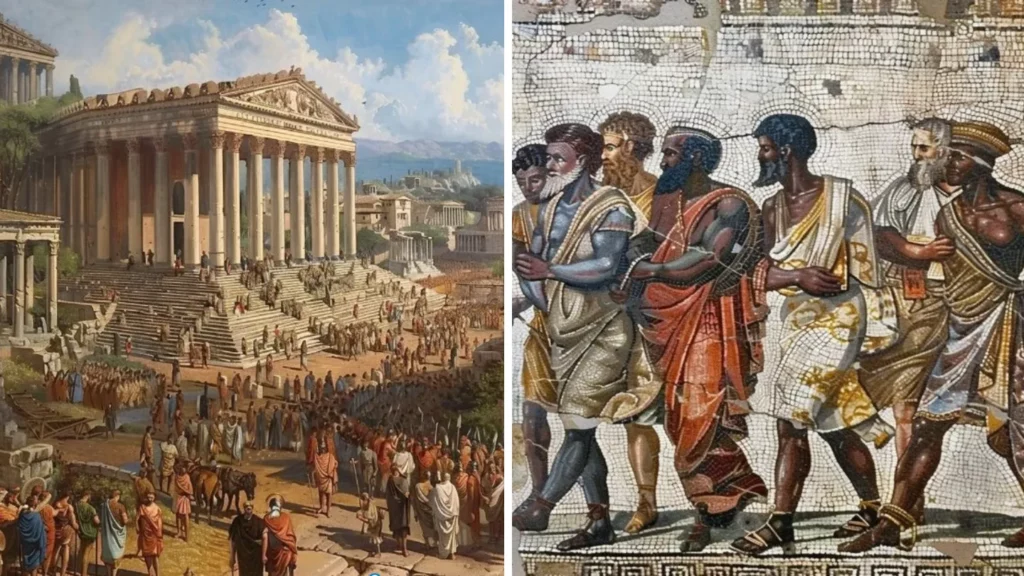When we think of ancient Rome, Julius Caesar, the Colosseum, and gladiators come to mind. There’s no denying that the Roman Empire, which spanned from 753 BC to 476 AD, was an iconic era of ancient history. Ancient Rome’s influence can be seen across many centuries, even shaping the Western world today.
From pet lions to violent chariot races, Roman society was full of surprises. Prepare to throw out everything you thought you knew about ancient Rome because we’re about to reveal what life was really like.
Gladiators Were Trained to Die
The life of a gladiator revolved around entertaining crowds and emerging victorious. Gladiatorial combat was as much about the spectacle as it was about survival, so gladiators were trained not only in combat skills, but also in the fine art of delivering and receiving the fatal blow.

While not all fights resulted in death, some gladiators did lose their lives in the arena. As the popularity of gladiator fighting grew throughout the Roman period, the fights became more brutal. In the 3rd Century, the mortality rate was around 25% of gladiator fighters.
Slaves Could Buy Their Freedom
Slavery had a long and complicated history in the ancient world. One way that Roman slavery differed from other cultures was that they had the concept of Manumission—meaning slaves were able to be freed.

Some Roman slave owners just freed their slaves outright, while others allowed them to pay for their own freedom using any money they’d saved as gifts. The prospect of potential freedom encouraged slaves to be hardworking and obedient, but the process was complicated. Some slaves never earned enough to buy their freedom and some after being freed still found the stigma of slavery hard to overcome.
Romans Had Short Work Days
In Rome, the workday was all about productivity and leisure in equal measure. With no clocks, Romans relied on the sun to wake them up around 6 a.m. They’d eat breakfast and then get right to work until the early afternoon—then it was time to relax.

Only a few stores would stay open past the early afternoon hours, as most people were busy watching gladiator competitions, chariot races, and wrestling matches, or visiting the baths or the theater. Most taverns stayed open all day as social hubs for eating and drinking.
Fires Were Extremely Common
People in ancient Rome didn’t have access to the same building materials we have today. Roman insulation was made from wood and mud, meaning they were susceptible both to crumbling down, and catching on fire.

Thanks to the densely populated and tightly packed nature of the city, fires were a constant threat, and they weren’t helped by Romans using hot coals and open flames to cook food in their homes. One of the most infamous was the Great Fire of Rome in 64 AD, which raged for six days and seven nights, destroying much of the city.
Banquets Followed the Same Format
For the wealthiest folk living in ancient Rome, simply hosting a banquet wasn’t enough. Banquets were about so much more than just eating and drinking—they were also important social and political events, where guests could network, form alliances, and display their wealth and status.

Each banquet usually followed the same extravagant format. Guests reclined on couches while dining, beginning with appetizers, then a main course, followed by entertainment from acrobats and musical performers. Sometimes, the chefs would even sing as they served their food. If the host was particularly wealthy, it wasn’t uncommon for live lions and bears to make an appearance.
The Ancient Mountain Made of Pots
Olive oil was a huge deal in ancient Rome. The Romans imported it from across the world, to be used at the baths, in medicine, and more. They consumed such a vast quantity of oil that they soon found themselves overwhelmed with a mass of empty terracotta containers, and nothing to do with them.

These broken pots were discarded after use because the oil residue would turn rancid, making them unsuitable for reuse. Over time, these discarded pots accumulated into a massive artificial mound that still exists today on Monte Testaccio, also known as “Potsherd Mountain”.
Emperors Owned Wild Animals
There are strange and eccentric emperors dotted throughout Roman History. With all the power and the support from the public, they were free to flaunt their wealth and put all kinds of unusual laws into action.

Emperor Elagabalus was one of the more eccentric rulers of Rome. He was just a teenager when he started his reign and was known for his scandalous parties, disregarding all the traditional Roman customs. Like many other emperors, he owned wild animals including lions and bears, which he allowed to roam freely around his parties.
Baking Was a Lucrative Job
In Roman times, grain was a form of currency, but there’s not much you can do with grain apart from baking it into bread. Most Romans didn’t have ovens in their homes, which meant that bakers played an incredibly important role in society.

Being a bread baker in ancient Rome was not only a prestigious role, but a lucrative one, too. The men who controlled the bread and commercial ovens were well-liked and respected. They often ran for political office and influenced civic elections.
Gladiators’ Armor Was Only for Show
If you thought there was only one type of gladiator in ancient Roman times, you’d be sorely mistaken. It’s estimated that there were actually more than 24 types, each with their own armor and weapons to use in the arena. It might have looked impressive, but it was mostly for show.

The armor wasn’t based on actual armor used on the battlefield. While some gladiators wore full suits of armor, others wore minimal protection to allow for greater mobility while fighting. It was designed to keep things fair and make it more entertaining for the audience.
There Were No Trained Doctors or Hospitals
Anyone who needed serious medical attention in ancient Rome was just about out of luck. Back then, there was no such thing as a trained doctor, and the closest thing to a hospital was a tent on the battlefield where soldiers would go to rest.

Roman residents instead had to rely on self-proclaimed doctors, a title that anyone could adopt without any formal qualifications. Success was often measured by the ability to keep patients alive rather than by advanced medical knowledge. Since autopsies were not allowed in Rome, people knew very little about the inside of the human body.
Justice Was Based on Social Status
In ancient Rome, justice was heavily influenced by social status. There was no police force, but this didn’t mean people acted without restraint. If someone caused another’s death, it was down to the victim’s family to seek justice, usually resulting in the offender’s death, unless they were of higher social status.

The judicial system was eventually established later, allowing accusations against higher-ups, but wealth often swayed the outcome. The elite usually got off lightly with lenient punishments, thanks to their perceived contributions to society, while people of lower status were left with harsh punishment. This system ensured a sense of social order, but still favored the powerful.








